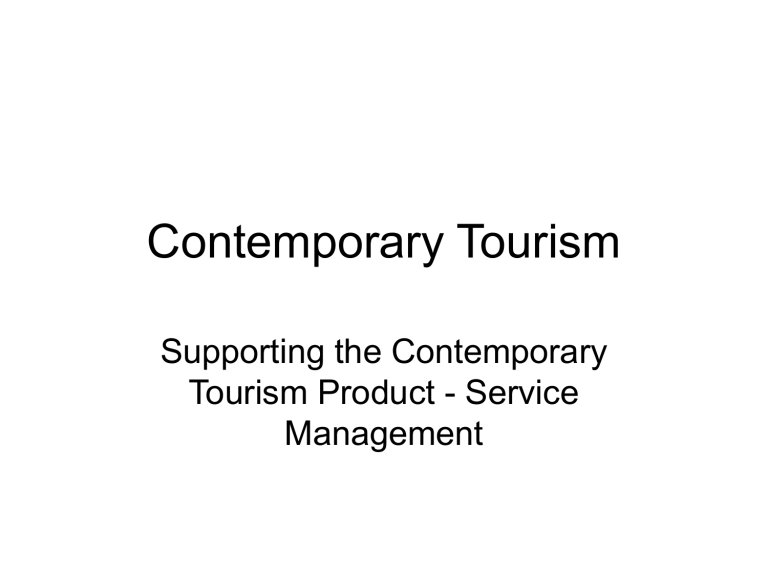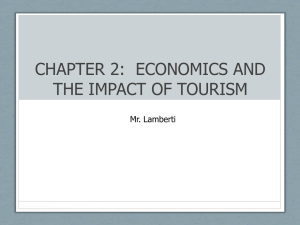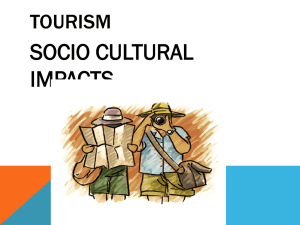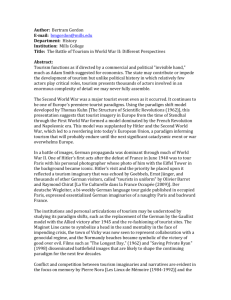Service Management - Goodfellow Publishers

Contemporary Tourism
Supporting the Contemporary
Tourism Product - Service
Management
Lecture Objectives
• Further appreciate the linkages and relationships between the various elements that combine to make up the contemporary destination product and experience
• Understand the ‘ service management
’ perspective
• Recognise the difference between a ‘ product ’ and ‘ customer ’ orientation
• Be aware of contemporary issues related to visitor / customer / tourist satisfaction, and whether satisfaction is an ambitious enough aim
• Be familiar with the concept of, and challenges with, managing and measuring service quality
• Understand the conceptual frameworks which link employees, customers and organisational performance
• View human resource management as a strategic function
• Understand innovative practices designed to measure and therefore manage service industry performance
Context
• How do tourists evaluate tourism experiences?
• Dependent on component parts
• Evolution towards a ‘service mindset’
• Tourism purchases are mainly services
• Services lead to a strategic view
• This is the new paradigm for tourism
Definitions
• Service management has been called “ the new paradigm
” in hospitality (Kandampully, 2002).
The central tenet of this new paradigm was defined by Albrecht (1988) as -
• “ a total organizational approach that makes quality of service, as perceived by the customer, the number one driving force for the operations of the business ” (p. 20).
Customer and Service
Orientation
• Customer at the centre of decisions
• Customer centric focus
• Not selling but creating value
Service Management
Concepts
• Service encounter
• Customer contact employees
• Customer satisfaction
• More than satisfaction
• Service quality
– SERVQUAL
– The Nordic model
Tourists, Employees and
Business Performance
• Service profit chain
• Employee-customer linkage research
Strategic HRM
• HR are the tangible resources of the firm
• From personnel management to SHRM
• Integrates HR into strategy
Service Culture & Climate
• All organizations have a culture
• Manager cannot control all encounters
• Creation of a service climate
• Balanced scorecard approach











